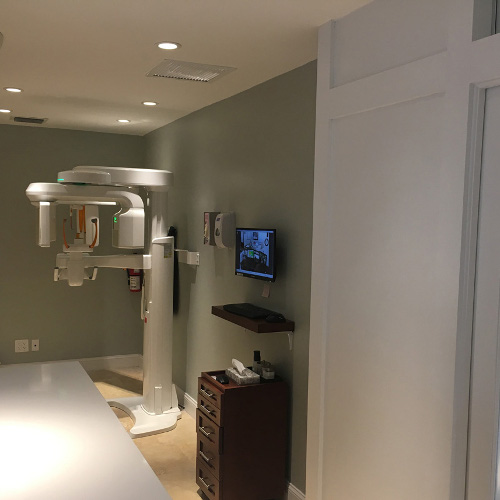CBCT vs. X-Ray and MDCT: Understanding the Differences
Miami and Coral Gables, Florida
When comparing different imaging technologies for dental diagnostics, it’s important to understand how Cone Beam Computed Tomography (CBCT), traditional X-rays, and Multiple Detector Computed Tomography (MDCT) differ and what each option offers for patient care.
CBCT vs. X-Ray
At its core, the primary distinction between CBCT and a traditional X-ray is dimensionality:
- CBCT produces 3D images while X-rays generate 2D images.
- CBCT provides more precise and detailed information for diagnosis and treatment planning, as it captures cross-sectional images from multiple angles. In contrast, traditional panoramic X-rays often present magnified and distorted images, which may not be as reliable for certain procedures.
- With a panoramic X-ray, the structures between the X-ray tube and the image detector are superimposed, making it difficult to separate individual structures. CBCT eliminates this issue, offering clear separation of critical anatomical details.
- CBCT delivers views such as axial, sagittal, coronal, and panoramic, making it easier to assess a patient’s condition comprehensively. Panoramic X-rays, on the other hand, provide limited one-dimensional views, making them less suitable for complex diagnostics.
CBCT vs. MDCT (Multiple Detector Computed Tomography)
Why choose CBCT over traditional MDCT scans for your dental practice? Here’s why CBCT is often the superior choice:
- Cost Efficiency: CBCT is significantly more affordable than MDCT, costing 3-5 times less. This is not only a benefit for your practice but also for your patients.
- Compact Size: CBCT machines are smaller and lighter, creating a less intimidating experience for patients compared to the larger, bulkier MDCT machines.
- Better Resolution: CBCT provides enhanced spatial resolution with smaller pixels, making it a better option for capturing fine details in dental imaging.
- Ease of Use: CBCT machines are simpler to operate and maintain, streamlining the imaging process for both practitioners and staff.
- Patient Comfort: Unlike MDCT, where patients must lie down inside a closed machine, CBCT allows patients to stand comfortably in an open design, reducing feelings of claustrophobia.
- Radiation Safety: CBCT emits less radiation than MDCT, making it a safer option for patients of all ages.
Why CBCT is a Game Changer
While both X-ray and MDCT have their place in medical diagnostics, CBCT offers a more comprehensive and patient-friendly option, especially for dental imaging. The combination of high-quality 3D images, lower costs, and reduced radiation exposure make CBCT a powerful tool for improving patient care and outcomes.
For more information on CBCT and how it can enhance your dental practice, contact Miami CBCT Center in Miami and Coral Gables, Florida at (305) 989-5577.

